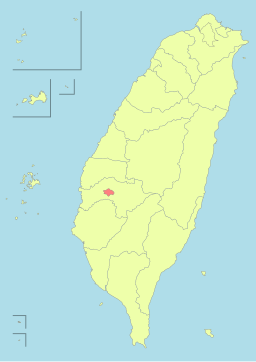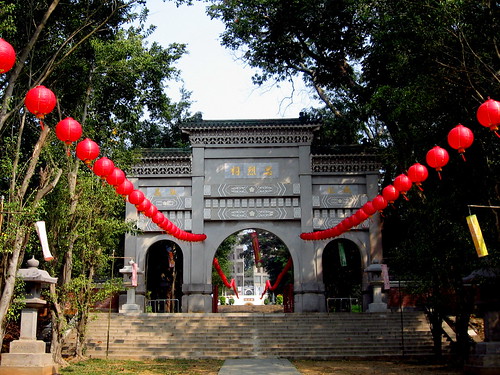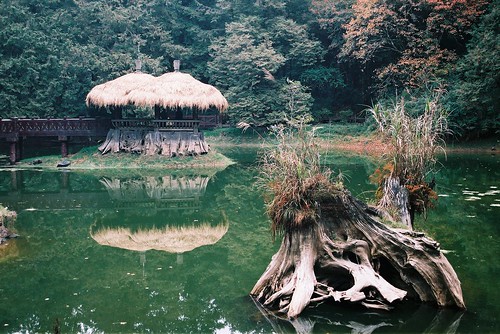Guide to Chiayi

Chiayi (嘉義市) is a historic city rich in cultural heritage and is renowned as the City of Paintings. It is located on the South Western area of Taiwan and is pronounced Jiayi. It is a provincial city and was formally known as Kagee during the Qing Dynasty, however its historical name is Tirosen. Chiayi is best known for its close proximity to Mt. Ali, one of the biggest mountains in Taiwan, which is an easy bus ride away from the city and makes for a great day of hiking and exploring.
The city is great for those seeking nature; take a ride around the city on a scooter/bicycle and explore the parks, lakes, temples, and mountains at your own pace whilst trying some of the local delicacies at the night markets such as turkey rice. You can also enjoy cultural festivals such as the famous annual (Stone Monkey) Stone Carving Festival and the annual Wind Music Festival.
Click on the Apply Now button to be taken to our Job Board.
History
Known as the “peach city” for its peachy shape, it was originally an area populated by one of the aboriginal tribes of Taiwan, the Hoanya aborigines, and it was them that named the area Tirosen. The name was then Chu-lô-san (諸羅山) which eventually was shortened to Chu-lô.
This name was changed to Chiayi in 1787 as a reward to the people from the Qing Emperor to praise the citizens’ loyalty making it the only city in Taiwan to have been personally named by an emperor.
The landscape of Chiayi was changed in 1906 when it was hit by a devastating earthquake with destroyed the entire city wall except for the Eastern gate. This encouraged a reconstruction of the walls by the Japanese authorities, as it was under Japanese rule.
In 1945 Japanese rule was relinquished from Taiwan and Chiayi was elevated to a provincial city under the jurisdiction of the Republic of China. This was downgraded to a county-government status later on, however due to pressure from locals this was again re-elevated to a provincial city.
Living in Chiayi
You will find that by living in a small city such as Chiayi you will have the advantage of a low cost of living meaning that you can save a larger chunk of your overall salary. Apartments in this area come at a very low price meaning that this doesn’t eat into your pay as much as other areas.
Chiayi is very well connected to other areas of Taiwan meaning that you can travel the Island with ease. The High Speed Rail runs through Chiayi making access to the big cities such as Taipei and Kaohsiung easy. Furthermore because of the location of Chiayi traveling to nearby areas such as Tainan and Kaohsiung is easy. Taipei is a little further away but the High Speed Rail means it takes just over an hour.
Getting Around
Chiayi has a very inexpensive Bus Rapid Transit system that can take you to most places in Chiayi and the buses have signs and announcements in both Chinese and English.
Taxis are cheap and in abundance, you can usually find many taxis hanging around the train and bus stations, but drivers tend not to speak any English. If you are going somewhere and need a taxi, it might best to have the address written down in Chinese.
Climate
Chiayi has a fairly warm climate influenced by a sub-tropical humid climate. The hottest month is June/July reaching an average of around 32.9°C. The coldest month being around February and reaches an average of 22.0°C.
What to do
Guide to Chiayi – Lantan (Holland Lake)
This man-made lake/reservoir was built with the purpose of reducing water shortages, which was a common problem in the area. Its name ‘Holland Lake’ is believed to have come from the rumors that the lake was dug by the Dutch 300 years ago.
This makes for a beautiful day out on foot or on a bicycle. The lake itself is surrounded by trees and hills and the clear water really adds to the natural beauty. There are many flat biking trails for you to enjoy the scenes at a leisurely pace.
In the center of the lake is a water fountain which shoots water as high as 50 meters complete with light displays at night. There are now plans in place to also include music to provide onlookers a music and light display between the hours of 6:00 pm and 9:00 pm every day.
You should certainly look out for are the intricate designs of the artist Wen-Zhi which can be seen in various places, the most famous being the “Shadows of the Moon and Heart of the Lake” bridge. The design uses braided aluminum strips that are lit up; they are woven in a lattice work that reflects the forest and the naturally wild landscape. If you are a fan of Lord Of The Rings, it looks like something you would find that was created by elves.
Guide to Chiayi – Chiayi Park and Botanical Gardens 
One of the best features of living in Chiayi is the huge Chiayi Park. This Spans an area of 268,000 square meters and dates back to the 43rd year of the Japanese Colonial period. You can find the park in the suburban area of East Chiayi city where you can discover for yourself the many features this park has to offer.
Take a walk around the park and admire the natural beauty of the tall old trees, waterside pavilions, bridges, fish ponds, winding pathways and densely wooded areas. Whilst on your journey be sure to check out the many historical ruins still present within the park including the 12 ancient cannons, Confucius Temple, Martyrs’ Shrine and the Mt. Ali Forest Railway No.21 steam train.
One of the big attractions to the park is the Sun-Shooting Tower which is a huge structure towering 62 meters high and is built mainly of brownish aluminum stripes with a bronze sculpture in the middle to represent the Sun Shooting Myth of the aboriginal people.
Interestingly the design of the structure is based upon the giant cicada trees that can be found in Mt. Ali, which explains the use of the brownish aluminum to represent bark. Approaching the tower you will see two copper leopards that represent the protective god of the Island.
Head to the top of the tower and find a watchtower, café and restaurant where you can spend a few hours absorbing the beauty of the park from an aerial view.
Guide to Chiayi – Alishan (Mt. Ali) National Scenic Area
The Alishan National Scenic Area covers a vast amount of land, approximately 415 km² in total. It is a huge mountain resort offering visitors the chance to enjoy its wilderness, waterfalls, tea plantations, hiking trails, villages and even mountain railways, to name a few. The views truly are breathtaking whether it is watching the sunrise over Jhushan or experiencing the joy of the Alishan Forest Railway, a steam strain that takes you through the mountains.
Alishan Forest Railway
The tracks of the railway stretch for 86 km taking visitors through all of the popular mountain resort areas of Alishan. The railway was originally designed to assist with the logging industry, however today it serves as a major tourist attraction, guiding people over 77 wooden bridges and 50 tunnels. The railway takes tourists to all of the greatest hot spots the mountain range has to offer.
Sunrise on Zhushan (Jhusan)
There are a number of areas throughout Alishan to watch the sunrise; Dadong Mountain offers a high altitude and odd shaped peaks, whereas Si Tian Wang Mountain offers an easy hike through bamboo forests to see the sunrise. But the best place to see the sunrise is Zhushan or Zhu Mountain.
Zhushan is renowned for being the best place to see the sunrise; it is so good than they have invested in building a number of viewing platforms for this particular reason.
To get to Zhushan you have two options, you can take the ‘sunrise viewing train’ from Alishan station which will take around 25 minutes. For the more adventurous you can walk up the ‘Zhushan Sunrise Viewing Trail’ from the Sunrise Viewing Trail arch in Zhaoping Park, this will take you around 40 minutes.
Giant trees trail
There are a number of trails that you can take throughout the Alishan national scenic area. However one of the most interesting is the Giant Tree Trail. The name of the trail is a big give away for what the main attraction is here. Known as a homeland for Cypress trees this area in Taiwan has one of the most densely clustered Cypress trees around. Trees here are generally around 1000 to 2000 years old, some reach a whopping 43 meters high and boast a 13 meter circumference.
All of these wonderful sights can be seen on one of two trails, both offering stunning views and of course, huge trees. The ‘sacred tree’ was one particular tree that was said to be over 3000 years old, had a height of 55 meters and a 23 meter circumference. Unfortunately this tree was destroyed in a natural disaster, but it was known to be the heart of Alishan.
Shoujhen Temple
This temple can be found nestled high in the Alishan National Scenic Area and is the most popular temple for locals to visit. Here they worship the God of Justice, the Feud God, and the Goddess of fertility.
The temple was reconstructed in 1969 and is by far the highest altitude temple in all of Taiwan, being 2150m above sea level. An interesting and mysterious time to go is on March 3rd. Allegedly on this date (which is a week before the birthday of the God of Justice) a group of Alishan Brahmin moths, which have a wingspan of 15cm, land on the statue of the God of Justice and stay for 15 days straight without moving until the celebration of the God’s birthday comes to an end. Definitely worth a visit.
The two Alishan sister ponds give visitors an extraordinary natural beauty that is born from a sad tale. The story goes that there were once two sisters who fell in love with the same man. Realizing that they couldn’t both have him and not wanting to destroy their sisterly bond the each jumped into separate ponds to end their lives.
The ponds themselves are extremely picturesque and definitely worth a visit. The high mountain ponds are so still they act like a mirror to the surrounding forest beauty. Two pavilions have been built out in the ponds with bridges to connect them so you can walk out to the center of each pond.





